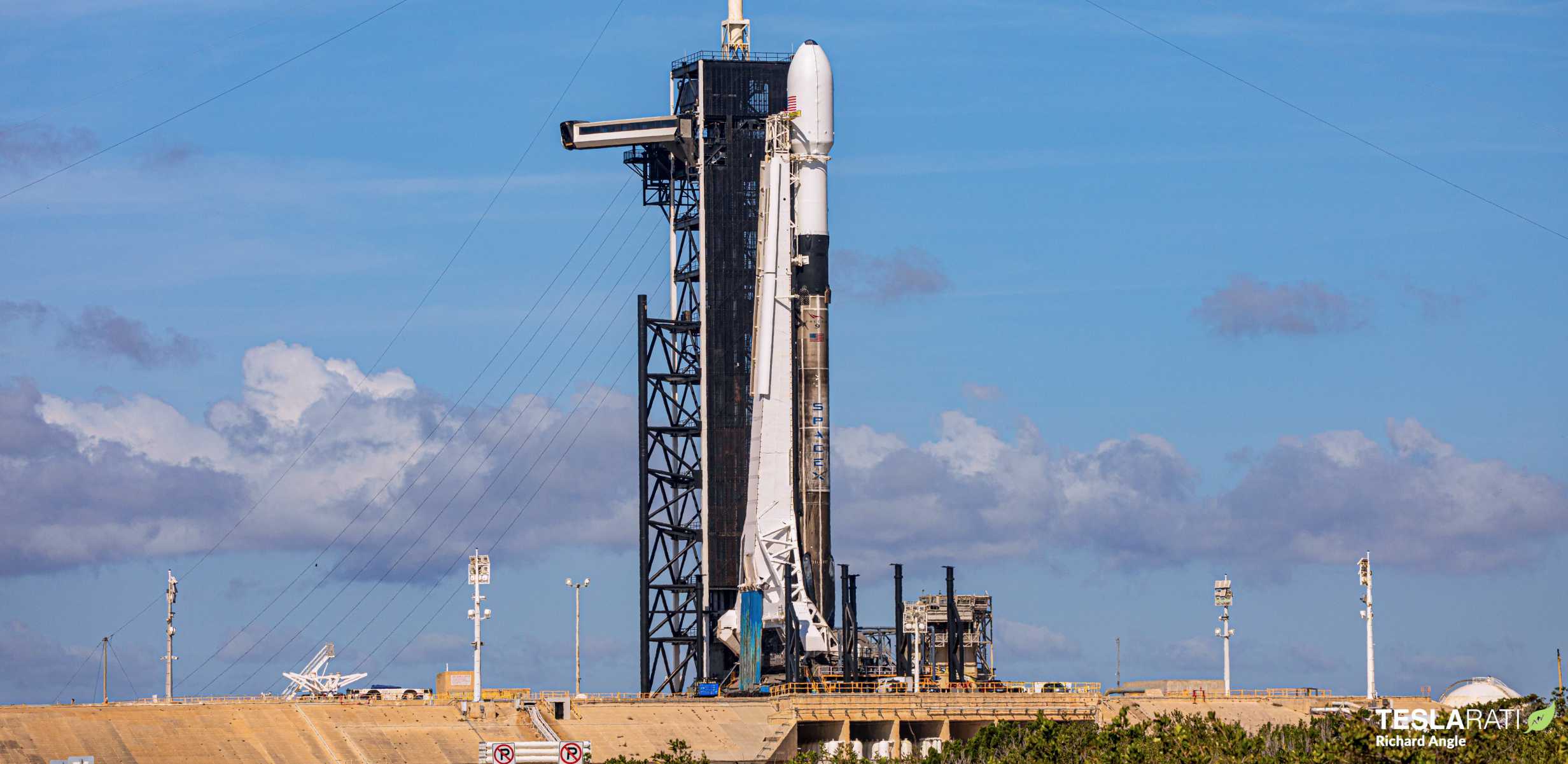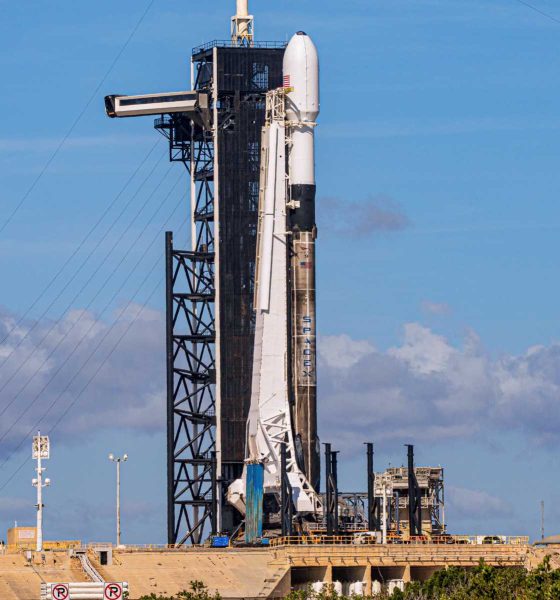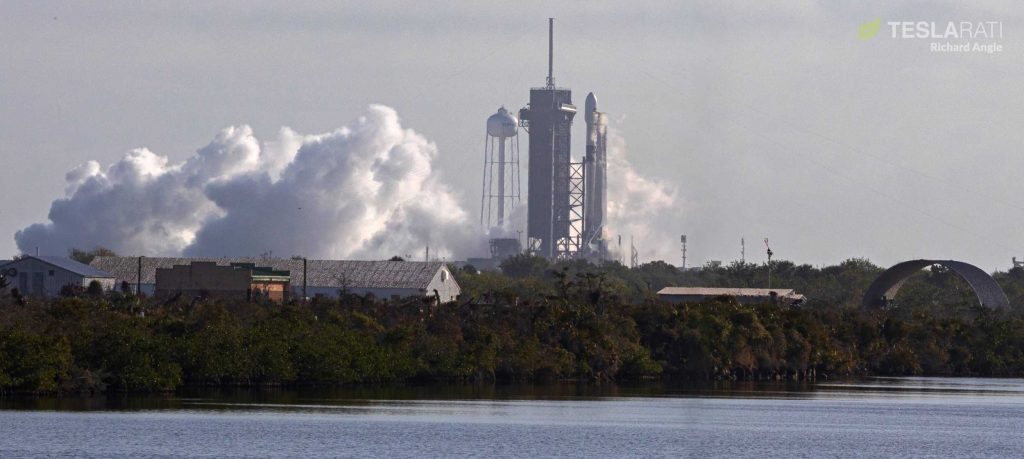

News
SpaceX rocket performs first last-second launch abort in years, delaying Starlink mission
A Falcon 9 rocket has performed SpaceX’s first last-second launch abort in years, shutting down the booster’s main engines and preventing liftoff just milliseconds after ignition.
Scheduled to lift off at 9:22 am EDT (13:22 UTC) on March 15th, SpaceX will now wait until no earlier than (NET) 8:21 am EDT (12:21 UTC) on Wednesday, March 18th for the sixth 60-satellite Starlink mission’s next launch attempt. Featuring an exceptionally flight-proven Falcon 9 booster and marking the second time ever SpaceX has reused a payload fairing, yesterday’s launch abort is also unique in its own right.
Notably, shortly after the launch countdown froze and Falcon 9 shut down at T-00:00:00, a launch operator – on-console either in Florida or at SpaceX’s Hawthorne, CA headquarters – revealed that the rocket had triggered a “launch abort on engine high power”. To explain that decision, a little background on how SpaceX launches its rockets and what exactly abort conditions are is necessary.
Software has always been a central part of SpaceX’s launch vehicles, treated more like a first-class citizen in design and engineering instead of the reluctant necessity other launch providers have frequently relegated it to. For anyone that’s watched numerous SpaceX launch webcasts, some might recognize the familiar “vehicle is in startup” callout that made around T-1 minute to liftoff. Standard on most modern launch vehicles, SpaceX’s Falcon rockets use onboard computers to take over their countdowns shortly before launch.
This is mainly done to allow the vehicle to simultaneously analyze thousands of channels of telemetry far faster and more reliably than humans ever could. During today’s launch attempt, that meant that Falcon 9 saw something it didn’t like just milliseconds before it was scheduled to command the release of the pad’s hold-down clamps and lift off.

Per one of SpaceX’s on-console engineers, the specific issue Falcon 9’s computer flagged was an “engine high power” alert. Soon after, SpaceX provided an update on Twitter, stating that the abort was “triggered due to out-of-family data during [an] engine power check” – putting the blame more on the sensors and software used to determine engine thrust than the engine hardware itself. An actual hardware or software failure that caused one or several booster engines to exceed their design limits could have potentially damaged B1048’s Merlin 1Ds, likely requiring weeks of repairs or a full swap with a different booster.
Given that Falcon 9 B1048 has already performed four orbital-class launches, hardware issues would not come as a major shock, but the successful static fire test it completed on Saturday made that far less likely. SpaceX’s confirmation that it was looking at an “out-of-family” reading thankfully means that only one of several thrust sensors showed the Falcon 9 booster producing too much thrust.

With any luck, post-ignition launch aborts will continue to be extremely rare for SpaceX’s Falcon launch vehicle family. The last such abort occurred in February 2016, more than four years and several booster ‘Block’ iterations ago.
Starlink L6 (V1 L5) is now scheduled to launch on Wednesday, March 18th, giving SpaceX workers some 72 hours to inspect Falcon 9 B1048’s engines, replace thrust sensors, tweak software, and prepare for a second launch attempt. Drone ship Of Course I Still Love You (OCISLY), fairing recovery ships GO Ms. Tree and GO Ms. Chief, and another support vessel or two remain on station in the Atlantic Ocean and will have to wait a bit longer for their next rocket recovery attempts.
Check out Teslarati’s Marketplace! We offer Tesla accessories, including for the Tesla Cybertruck and Tesla Model 3.

Elon Musk
Elon Musk’s X will start using a Tesla-like software update strategy
The initiative seems designed to accelerate updates to the social media platform, while maintaining maximum transparency.

Elon Musk’s social media platform X will adopt a Tesla-esque approach to software updates for its algorithm.
The initiative seems designed to accelerate updates to the social media platform, while maintaining maximum transparency.
X’s updates to its updates
As per Musk in a post on X, the social media company will be making a new algorithm to determine what organic and advertising posts are recommended to users. These updates would then be repeated every four weeks.
“We will make the new 𝕏 algorithm, including all code used to determine what organic and advertising posts are recommended to users, open source in 7 days. This will be repeated every 4 weeks, with comprehensive developer notes, to help you understand what changed,” Musk wrote in his post.
The initiative somewhat mirrors Tesla’s over-the-air update model, where vehicle software is regularly refined and pushed to users with detailed release notes. This should allow users to better understand the details of X’s every update and foster a healthy feedback loop for the social media platform.
xAI and X
X, formerly Twitter, has been acquired by Elon Musk’s artificial intelligence startup, xAI last year. Since then, xAI has seen a rapid rise in valuation. Following the company’s the company’s upsized $20 billion Series E funding round, estimates now suggest that xAI is worth tens about $230 to $235 billion. That’s several times larger than Tesla when Elon Musk received his controversial 2018 CEO Performance Award.
As per xAI, the Series E funding round attracted a diverse group of investors, including Valor Equity Partners, Stepstone Group, Fidelity Management & Research Company, Qatar Investment Authority, MGX, and Baron Capital Group, among others. Strategic partners NVIDIA and Cisco Investments also continued support for building the world’s largest GPU clusters.
News
Tesla FSD Supervised wins MotorTrend’s Best Driver Assistance Award
The decision marks a notable reversal for the publication from prior years, with judges citing major real-world improvements that pushed Tesla’s latest FSD software ahead of every competing ADAS system.

Tesla’s Full Self-Driving (Supervised) system has been named the best driver-assistance technology on the market, earning top honors at the 2026 MotorTrend Best Tech Awards.
The decision marks a notable reversal for the publication from prior years, with judges citing major real-world improvements that pushed Tesla’s latest FSD software ahead of every competing ADAS system. And it wasn’t even close.
MotorTrend reverses course
MotorTrend awarded Tesla FSD (Supervised) its 2026 Best Tech Driver Assistance title after extensive testing of the latest v14 software. The publication acknowledged that it had previously criticized earlier versions of FSD for erratic behavior and near-miss incidents, ultimately favoring rivals such as GM’s Super Cruise in earlier evaluations.
According to MotorTrend, the newest iteration of FSD resolved many of those shortcomings. Testers said v14 showed far smoother behavior in complex urban scenarios, including unprotected left turns, traffic circles, emergency vehicles, and dense city streets. While the system still requires constant driver supervision, judges concluded that no other advanced driver-assistance system currently matches its breadth of capability.
Unlike rival systems that rely on combinations of cameras, radar, lidar, and mapped highways, Tesla’s FSD operates using a camera-only approach and is capable of driving on city streets, rural roads, and freeways. MotorTrend stated that pure utility, the ability to handle nearly all road types, ultimately separated FSD from competitors like Ford BlueCruise, GM Super Cruise, and BMW’s Highway Assistant.
High cost and high capability
MotorTrend also addressed FSD’s pricing, which remains significantly higher than rival systems. Tesla currently charges $8,000 for a one-time purchase or $99 per month for a subscription, compared with far lower upfront and subscription costs from other automakers. The publication noted that the premium is justified given FSD’s unmatched scope and continuous software evolution.
Safety remained a central focus of the evaluation. While testers reported collision-free operation over thousands of miles, they noted ongoing concerns around FSD’s configurable driving modes, including options that allow aggressive driving and speeds beyond posted limits. MotorTrend emphasized that, like all Level 2 systems, FSD still depends on a fully attentive human driver at all times.
Despite those caveats, the publication concluded that Tesla’s rapid software progress fundamentally reshaped the competitive landscape. For drivers seeking the most capable hands-on driver-assistance system available today, MotorTrend concluded Tesla FSD (Supervised) now stands alone at the top.
News
Elon Musk’s Grokipedia surges to 5.6M articles, almost 79% of English Wikipedia
The explosive growth marks a major milestone for the AI-powered online encyclopedia, which was launched by Elon Musk’s xAI just months ago.

Elon Musk’s Grokipedia has grown to an impressive 5,615,201 articles as of today, closing in on 79% of the English Wikipedia’s current total of 7,119,376 articles.
The explosive growth marks a major milestone for the AI-powered online encyclopedia, which was launched by Elon Musk’s xAI just months ago. Needless to say, it would only be a matter of time before Grokipedia exceeds English Wikipedia in sheer volume.
Grokipedia’s rapid growth
xAI’s vision for Grokipedia emphasizes neutrality, while Grok’s reasoning capabilities allow for fast drafting and fact-checking. When Elon Musk announced the initiative in late September 2025, he noted that Grokipedia would be an improvement to Wikipedia because it would be designed to avoid bias.
At the time, Musk noted that Grokipedia “is a necessary step towards the xAI goal of understanding the Universe.”
Grokipedia was launched in late October, and while xAI was careful to list it only as Version 0.1 at the time, the online encyclopedia immediately earned praise. Wikipedia co-founder Larry Sanger highlighted the project’s innovative approach, noting how it leverages AI to fill knowledge gaps and enable rapid updates. Netizens also observed how Grokipedia tends to present articles in a more objective manner compared to Wikipedia, which is edited by humans.
Elon Musk’s ambitious plans
With 5,615,201 total articles, Grokipedia has now grown to almost 79% of English Wikipedia’s article base. This is incredibly quick, though Grokipedia remains text-only for now. xAI, for its part, has now updated the online encyclopedia’s iteration to v0.2.
Elon Musk has shared bold ideas for Grokipedia, including sending a record of the entire knowledge base to space as part of xAI’s mission to preserve and expand human understanding. At some point, Musk stated that Grokipedia will be renamed to Encyclopedia Galactica, and it will be sent to the cosmos.
“When Grokipedia is good enough (long way to go), we will change the name to Encyclopedia Galactica. It will be an open source distillation of all knowledge, including audio, images and video. Join xAI to help build the sci-fi version of the Library of Alexandria!” Musk wrote, adding in a later post that “Copies will be etched in stone and sent to the Moon, Mars and beyond. This time, it will not be lost.”








